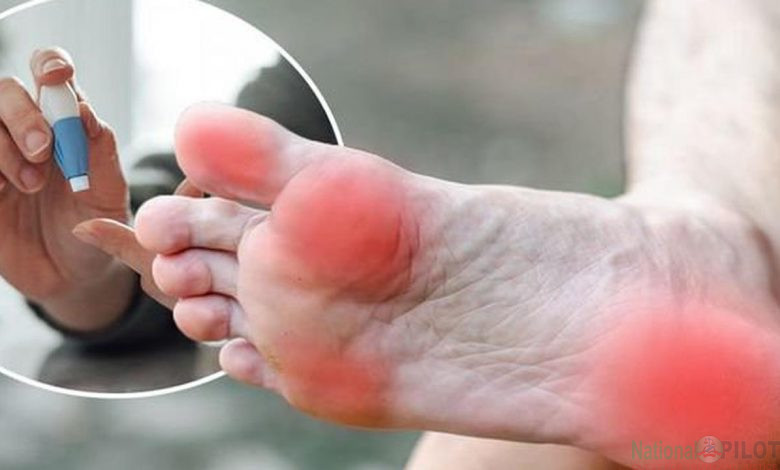Diabetes type 2: The sign of blood sugar in your feet that could lead to amputation

Type 2 diabetes is a chronic condition whereby the pancreas does not produce enough insulin or the insulin it does produce is not processed by the cells. Insulin is a hormone that regulates blood sugar – the main type of sugar found in blood. Like many processes in the body, blood sugar levels must be balanced in order to support vital functions and minimise the health risks. Uncontrolled blood sugar levels can cause a torrent of problems, some of which can prove irreversible.
Some of the gravest complications are associated with neuropathy – the medical term for blood sugar damage to the peripheral nerves – a network of 43 pairs of motor and sensory nerves that connect the brain and spinal cord (the central nervous system) to the entire human body.
Peripheral neuropathy develops when nerves in the body’s extremities, such as the hands, feet and arms, are damaged.
According to the American Diabetes Association (ADA), peripheral neuropathy, a loss of feeling in the feet is one of the most common symptoms of neuropathy.
This makes it easy to get ulcers and infections that may lead to amputation, warns the ADA.
“Most amputations are preventable by checking your feet daily, regular care and visits with your doctor, and proper footwear,” the health body explains.
Other signs of diabetic foot problems include:
Tingling
Pain (burning or stinging)
Weakness in the foot.
How to prevent diabetes complications
The key to staving off diabetes complications is to bring blood sugar levels under control.
Diet and exercise are the core components of blood sugar control.
“It might make sense that exercising harder would have a better effect on lowering blood sugar therefore but this is not always the case as strenuous exercise can produce a stress response which causes the body to raise blood glucose levels,” explains the health body.
“This response does tend to vary from person to person.”
As Harvard Health points out, you’ll also want to pay “special attention” to your carbohydrate intake.
Tingling in the feet may signal blood sugar damage
Diabetes type 2 symptoms: The skin condition on your feet to look for
That’s because carbs are broken down into glucose (blood sugar) relatively fast, which can cause a marked rise in blood sugar levels.
“Vegetables, fruits, and whole grains provide more nutrition per calorie than refined carbohydrates and tend to be rich in fibre,” notes Harvard Health.
As it explains, “your body digests high-fibre foods more slowly — which means a more moderate rise in blood sugar”.
The health body adds: “Avoid highly refined carbohydrates such as white bread, pasta, and rice, as well as candy, sugary soft drinks, and sweets.”
What are early signs of diabetes? 9 symptoms to watch for
Key facts about type 2 diabetes
The NHS explains: “Losing weight (if you’re overweight) will make it easier for your body to lower your blood sugar level, and can improve your blood pressure and cholesterol.”
According to the health body, if you need to lose weight, it is recommended for most people to do it slowly over time.
“Aim for around 0.5 to 1kg a week.”
Culled from: express.co.uk





